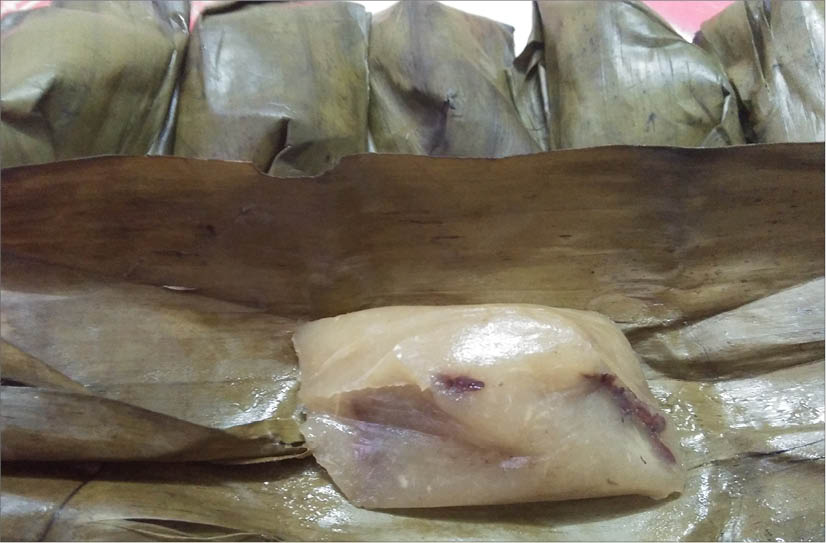
Enjoying banh san while listening to Mom's old stories is best.
"Why didn't you buy some at the market, Mom?" asked my eldest sister, frowning. Mom shook her head, smiling: "Previously, banh san could be bought at Tuan Market, but not now. As I guess, they stopped selling it because no one buys it today. How I miss it!" Hearing Mom say so, my sister decided to make some for her.
The whole family got excited. My eldest sister found some mung beans. She used a bottle to break the beans in half, soaked them with hot water for a while so that their peel could be taken off easily, then steamed the beans. Mom ran out to the garden fetching some banana leaves, tore them into pieces as big as a hand, then soaked them with warm water to make them soft. Dad found an old can for condensed milk, cut it into a flat rectangular piece, made small holes on the surface with a nail and a hammer to make a grater for cassava. Previously, Dad used to make a decent one, but since we stopped growing cassava, it has been nowhere to be found.
The quality of banh san depends very much on the dough. It must be from three-moon cassava because this kind of cassava gives good smell and is not bitter. Cassava roots are peeled, soaked in salt water for several hours to lessen the bitter taste and wash away the toxin, then are grated. You can use the fruit blender instead if you do not have the grater. The dough is then squeezed. Add in some salt, pepper, monosodium glutamate, chopped spring onion, and mix them well.
Filling is simple to make. Mung beans are peeled then cooked well. Put a frying pan on the fire, pour in some spoonfuls of oil. When the oil is hot, add a handful of chopped shallot; wait until they turn golden brown, add some chopped spring onion, then pour in the cooked mung beans; add some pepper, salt, monosodium glutamate to finish.
Divide the paste into small pieces; make them flat, then put in the filling. Cover each with banana leaf, then steam boil them.
Banh san tastes best when hot. It is fun to blow while eating. It tastes even better with a little of fish sauce and some green chili. Banh san is a combination of the flavors of cassava, mung beans and the smell of pepper and onion. Nothing can be compared with sitting near a stove in the kitchen on rainy days, taking a bite of banh san surrounded with the smell of smoke. Enjoying banh san while listening to Mom's old stories is best.
Mom told us about those hard days when even cassava was scarce because of poor soil. Even three-moon cassava tasted bitter. At that time, seven-tenths of the rice pot was cassava. So much that Mom felt fed up with it, running to the neighbor to avoid the smell when seeing Grandma open the rice pot.
In our time, we still had to add cassava to the rice pot. But Mom also created different delicious dishes with cassava. Cassava was steamed and mixed with grated coconut, eaten with sesame, cassava pies, etc., and we did not feel frightened as Mom had been before.
If you want to eat sweet banh san, just use sugar instead of salt, and do not add onion. If you like, you can add coconut cream and some grated coconut, steam boil with some pandan leaves, or you can grill it over a charcoal fire.
Cassava is staple food for those hard days. But we all liked it because Mom made different good dishes with cassava. Life is now better; few people sell banh san. If we want to enjoy it, we have to make it. It is indeed tiring work, but fun.
Story and photo: NGOC LINH